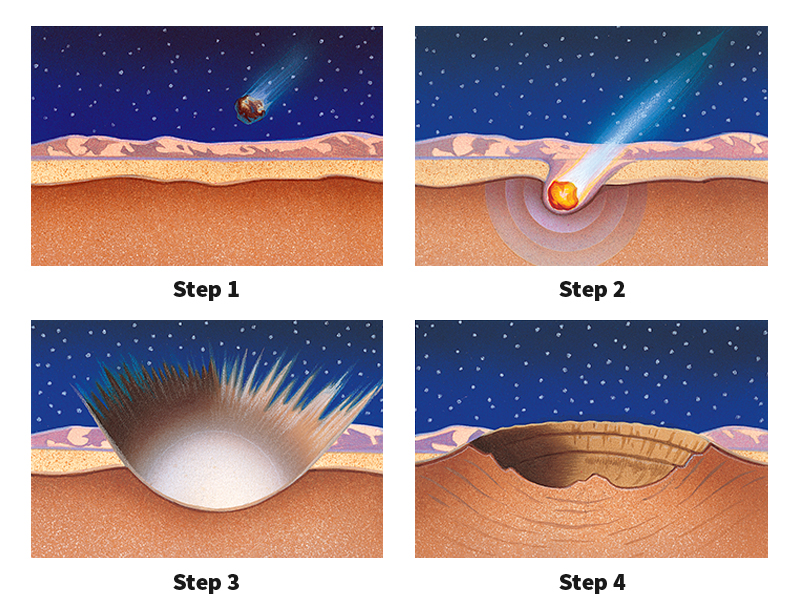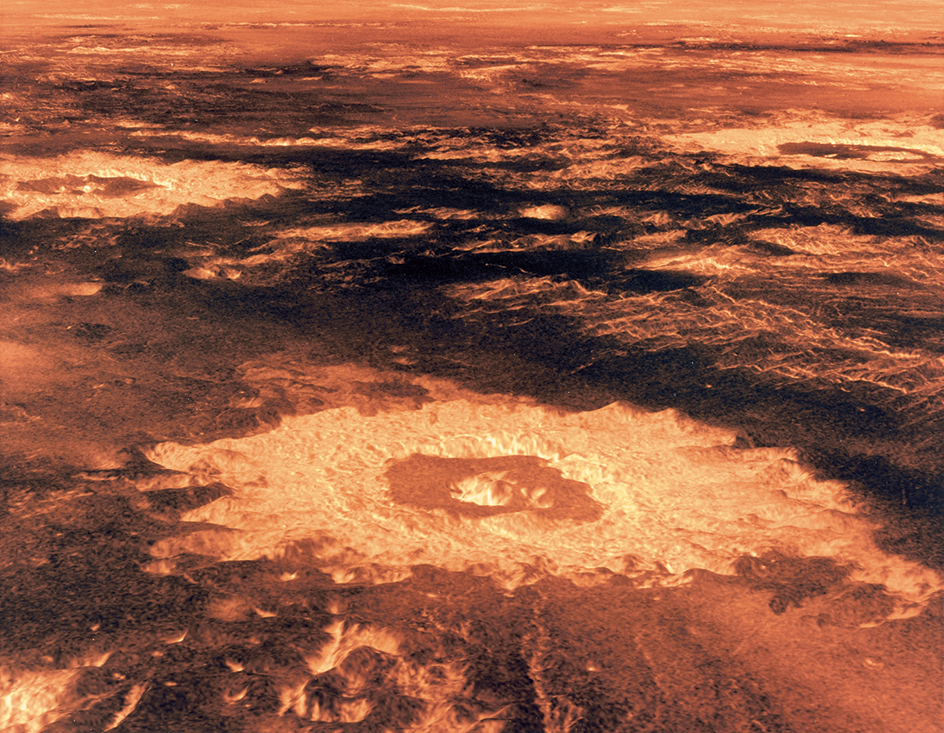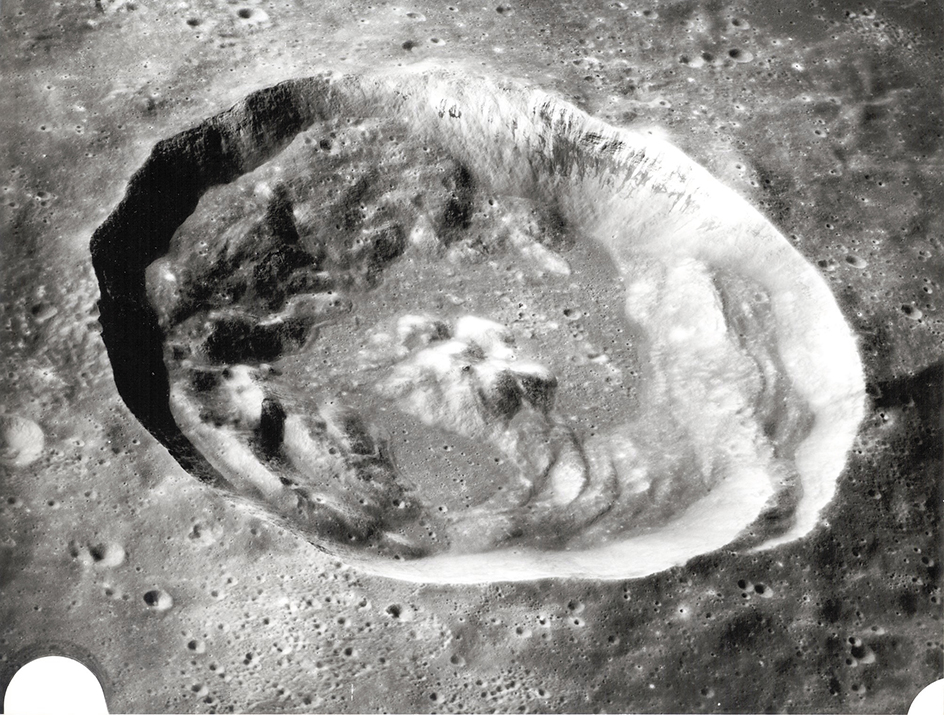Crater is a bowl-shaped depression on the surface of a planet, moon, or other solid body. A variety of forces can produce craters.

Most craters on planets and moons in our solar system are impact craters. Impact craters form when an asteroid, comet, or other solid body strikes the surface of a larger body, such as a planet or moon, at high speed. Such an impact releases a tremendous amount of energy in the form of shock waves. Shock waves are waves of energy that travel away from the impact. The shock waves travel through the surface until their energy is used up. As they travel, they push material away from the impact site, forming the crater. The shock waves force some of this material upward and outward to form the wall of the crater. The impact also tosses some of the material into the air. This material, called ejecta, settles around the crater in a layer called the ejecta blanket.

Small impact craters are often bowl-shaped. Larger impact craters tend to have flatter bottoms and more complex features. After the impact, the center of the crater can bounce back up, producing a central peak. The steep walls can collapse under the force of gravity, forming terraces.
Astronomers study impact craters to learn more about the surfaces of heavenly bodies. The number of craters on a surface gives astronomers some idea of the surface’s age. The depth and shape of craters provide scientists with clues about the materials that make up the surface.

Volcanic activity creates most of the craters on Earth. A volcanic explosion can make a crater by blasting away dirt and rock. Inactive volcanoes can collapse to leave craters called calderas. Other craters form when water dissolves away underground rock. This can cause the ground above to collapse, forming a crater called a sinkhole.

